16 Unique and Interesting Chinchilla Facts
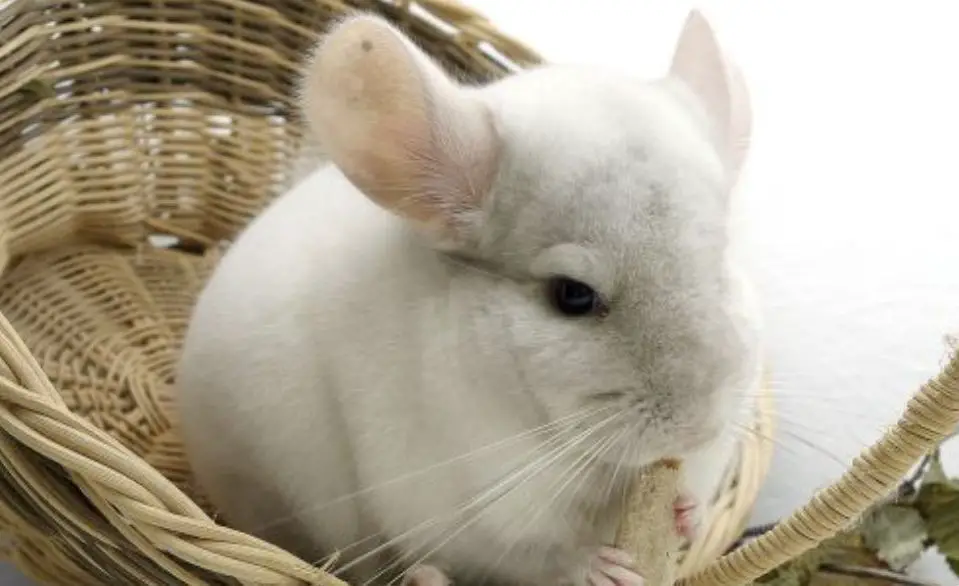
Let’s dive into the fascinating world of chinchillas, those adorable little fluffballs that steal our hearts.
In this quick read, we’ll uncover some surprising chinchilla facts that will make you go “aww” and “wow” at the same time.
So, buckle up and get ready to discover the cutest secrets of these furry wonders!
Interesting Chinchilla Facts
Here are some of the most interesting chinchilla facts you should know:
1. Chinchillas Are Native to the Andes Mountains
Chinchillas are native to the Andes Mountains of South America, specifically in the countries of Bolivia, Chile, Peru, and Argentina.
These mountainous regions provide the perfect habitat for chinchillas, with their rocky terrain, crevices, and burrows.
Chinchillas are adapted to the high altitudes and cooler temperatures of their natural habitat, which can reach up to 15,000 feet above sea level.
Their agile nature and strong hind limbs allow them to navigate the rocky slopes and cliffs with ease.
2. Chinchillas Have Incredibly Soft Fur
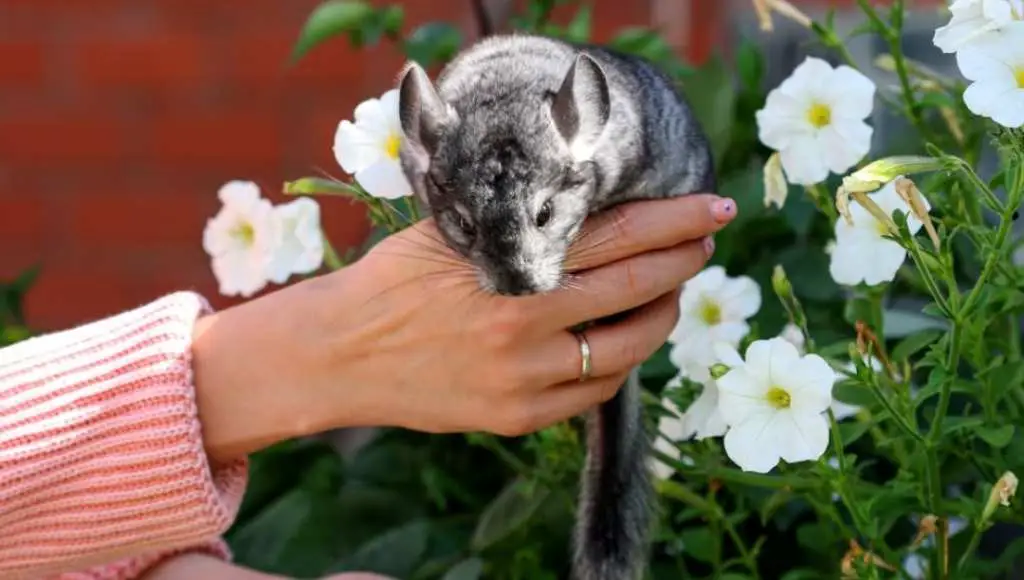
Let’s talk about that fur! Chinchillas possess one of the softest furs in the animal kingdom.
Their fur is so luxurious that it has become highly sought after by the fur industry. The reason for their softness lies in their fur structure.
Chinchillas have an incredibly dense coat, with each hair follicle producing multiple hairs.
In fact, they have one of the highest hair densities compared to any land mammal. This dense coat serves as insulation, keeping them warm in their cold mountainous habitat.
The individual hairs of a chinchilla’s fur are fine and delicate, giving them that irresistibly soft and velvety texture.
3. Chinchilla Lifespans Are Longer Than Many Small Pets
When it comes to pet longevity, chinchillas are a great choice for those looking for a long-term companion.
Chinchillas have longer lifespans compared to many other small pets. With proper care and a healthy lifestyle, chinchillas can live up to 15 years or even longer.
This means that bringing a chinchilla into your life is a commitment that spans a significant portion of time.
It’s important to provide them with a balanced diet, a spacious and stimulating environment, and regular veterinary check-ups to ensure they live a happy and healthy life.
4. Baby Chinchillas Are Called Kits
When chinchillas reproduce, their offspring are called kits. Chinchillas have a relatively long gestation period of around 111 days, which is quite lengthy compared to other rodents.
When the kits are born, they are fully furred and have their eyes wide open. They are incredibly active and curious right from the start.
Baby chinchillas are born in litters of one to six, with an average litter size of two. They grow rapidly and are weaned by their mother at around six to eight weeks of age.
Spending time with these adorable kits as they explore their surroundings and playfully interact with their siblings is a heartwarming experience.
5. Chinchillas Are Nocturnal Animals
Chinchillas are fascinating creatures, and one of their unique characteristics is that they are nocturnal animals.
This means that they are most active during the night and prefer to sleep during the day.
Their nocturnal behavior is believed to be an adaptation to their natural habitat in the Andes Mountains of South America, where they can avoid the heat of the day and potential predators.
So, if you ever have a chinchilla as a pet, don’t be surprised if they start their lively antics when the sun goes down.
Learn more about the pros and cons of owning chinchillas.
6. There are Two Breeds of Chinchillas
When it comes to chinchillas, there are two main breeds: the short-tailed chinchilla (Chinchilla chinchilla) and the long-tailed chinchilla (Chinchilla lanigera).
These two breeds have some differences in terms of their physical characteristics and behavior.
The short-tailed chinchilla is known for its stockier build and shorter tail, while the long-tailed chinchilla has a more slender body and, as the name suggests, a longer tail.
Both breeds come in various colors, including gray, white, beige, and even black.
Each breed has its own unique traits and personality, making them even more interesting to observe and interact with.
7. Chinchillas are Prone to Heatstroke
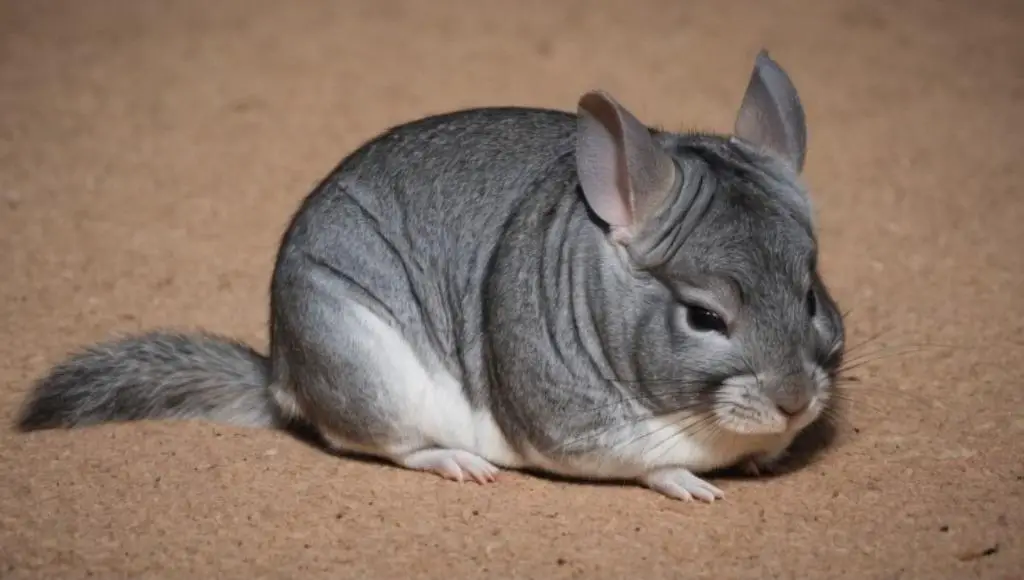
Despite their thick fur, chinchillas are surprisingly sensitive to high temperatures and humidity.
This is because they are native to the cool climate of the Andes Mountains, where they are naturally adapted to lower temperatures.
Due to their fur density, chinchillas struggle to dissipate heat efficiently, which puts them at risk of heatstroke.
It’s crucial to provide them with a cool and well-ventilated environment, especially during hot weather.
Additionally, chinchillas have a unique way of regulating their body temperature by taking dust baths.
They roll around in special volcanic ash or dust, which helps to absorb excess oils and moisture from their fur, keeping them cool and clean.
8. Chinchillas are an Endangered Species
It’s disheartening to know that chinchillas are currently classified as an endangered species.
The main reason for their endangered status is the demand for their soft and luxurious fur.
Unfortunately, chinchillas have been heavily hunted for their fur, leading to a decline in their population.
Conservation efforts are in place to protect these adorable creatures and ensure their survival.
These efforts include establishing protected areas, promoting responsible breeding programs, and raising awareness about the importance of preserving their natural habitats.
If you ever come across a chinchilla, take a moment to appreciate their uniqueness and support conservation initiatives in any way you can.
9. Chinchillas Do Not Take Water Baths Instead They Take Dust Baths
Unlike most animals that enjoy a good splash in the water, chinchillas have a different approach to hygiene.
“” They have dense fur that is highly efficient at retaining moisture, making them susceptible to fungal infections if they get wet.**
To keep their fur clean and healthy, chinchillas take dust baths. They roll around in special volcanic ash or fine dust, which helps to absorb excess oil and remove dirt from their fur.
These dust baths not only keep them clean but also help to maintain their fur’s natural softness and shine.
It’s a unique grooming ritual that is both practical and adorable to watch!
10. Chinchillas Have a Unique Defense Mechanism Called “Bar Slip”
Chinchillas have developed a remarkable defense mechanism to evade predators.
When a predator grabs hold of a chinchilla’s fur, the chinchilla can actually slip out of its own fur to escape.
This incredible ability is known as “bar slip” and is made possible by the unique structure of their fur.
Chinchilla fur has multiple layers, with the outer guard hairs interlocking with the softer undercoat.
This allows them to easily slide out of their fur when they feel threatened, leaving the predator with a mouthful of fur while the chinchilla scurries away to safety.
It’s an evolutionary adaptation that showcases their resourcefulness and survival instincts.
11. Chinchillas are Excellent Jumpers
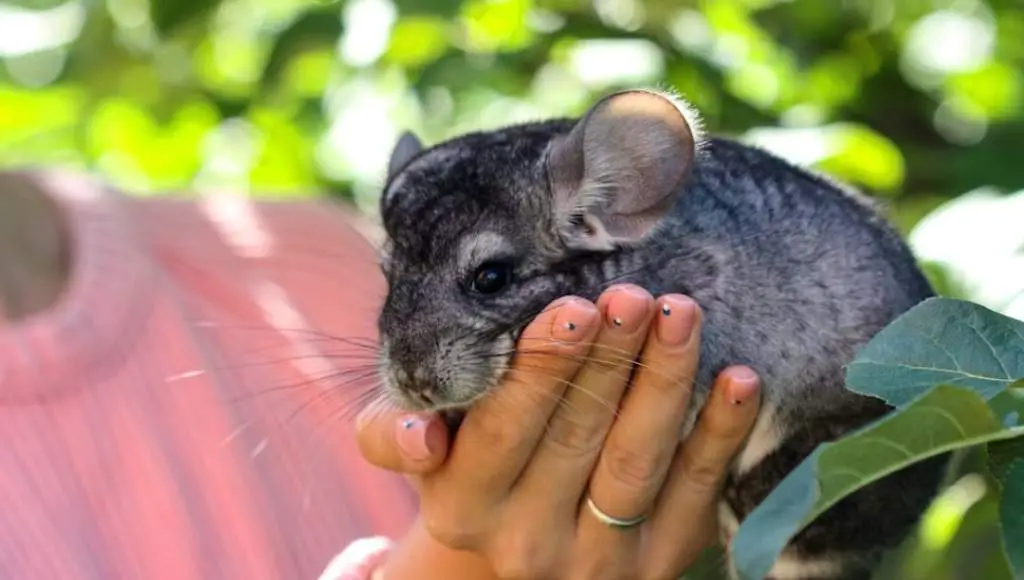
Chinchillas are known for their impressive jumping abilities. With their muscular hind legs and strong hindquarters, they can leap distances of up to five feet in the air!
This exceptional jumping prowess helps them navigate their natural habitat, which includes rocky terrains and steep slopes.
Chinchillas use their hind legs to propel themselves into the air, tucking their front paws close to their bodies.
Their incredible agility and precision allow them to navigate obstacles and escape from predators.
Their jumping skills are not only practical but also quite entertaining to witness, showcasing their natural athleticism.
12. Chinchillas Have Continuously Growing Teeth
Another fascinating fact about chinchillas is that their teeth never stop growing!
Chinchillas have open-rooted teeth, meaning their teeth grow continuously throughout their lives.
This unique dental adaptation is necessary because their diet primarily consists of fibrous vegetation, such as hay and grasses.
Chewing on these tough foods helps wear down their teeth and prevent them from overgrowing.
Without proper dental care, chinchillas can develop dental problems, such as malocclusion, where the teeth don’t align correctly.
To keep their teeth healthy, chinchillas require a diet rich in fibrous material and plenty of chew toys to gnaw on.
Their continuously growing teeth are a remarkable adaptation that ensures their survival in the wild.
13. Chinchillas Have a Unique Ability to Conserve Water
Chinchillas are masters at water conservation. In their natural habitat, these adorable rodents come from the dry and arid regions of the Andes Mountains in South America.
To adapt to this environment, chinchillas have developed some impressive water-saving techniques.
One of their most remarkable abilities is the ability to reabsorb moisture from their own feces.
Yes, you heard that right! Chinchillas produce dry, pellet-like droppings that contain very little water.
By reabsorbing the moisture from their feces, they can minimize their water loss and stay hydrated in their dry habitat.
It’s a clever adaptation that helps them thrive in their challenging surroundings.
14. Chinchillas Are Strictly Herbivores
When it comes to their diet, chinchillas are bona fide herbivores. They have a strictly plant-based menu, consisting of various grasses, leaves, stems, and even some bark.
Their digestive system is finely tuned to break down and extract nutrients from these fibrous plant materials.
Interestingly, chinchillas have a unique need for roughage in their diet to maintain their dental health.
Chewing on fibrous foods helps wear down their continuously growing teeth, preventing dental problems.
So, if you ever spot a chinchilla munching on some hay or leafy greens, know that it’s not just a tasty treat for them but also vital for their well-being.
15. Chinchillas Have a Short Gestation Period and Carry 1 to 6 Kits During Pregnancy
When it comes to reproduction, chinchillas have some intriguing traits. First, their gestation period is relatively short compared to many other mammals.
On average, it lasts around 111 days, which is quite speedy. Once the female chinchilla becomes pregnant, she carries the developing kits in her womb for this relatively brief period.
And speaking of kits, chinchillas typically give birth to litters of 1 to 6 babies, known as kits.
These adorable furballs are born fully furred, with their eyes open and ready to explore the world.
It’s quite a sight to see a chinchilla mother caring for her little ones, grooming and nursing them until they are independent enough to venture out on their own.
16. Chinchillas Have Several Unique Anatomical Features
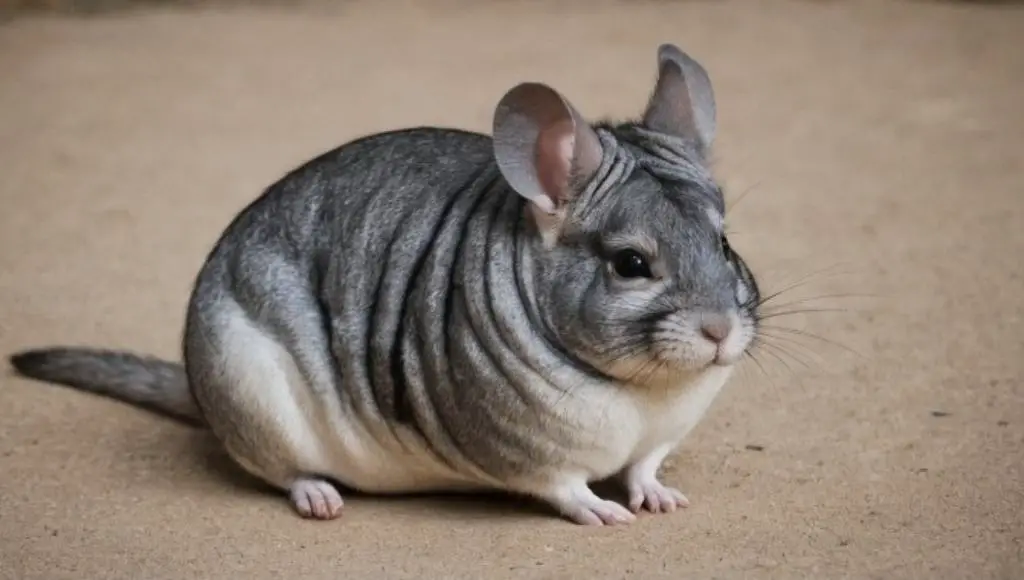
Chinchillas possess some intriguing anatomical features that set them apart.
For starters, they have incredibly dense fur, with approximately 60 hairs growing from each follicle.
This dense fur provides excellent insulation and helps them survive in cold mountainous regions.
Another interesting feature is their large ears. Chinchillas have remarkably large ears that they can rotate independently, allowing them to detect sounds from various directions.
It’s like having built-in radar! Additionally, chinchillas have long and agile hind limbs, which enable them to be exceptional jumpers.
They can leap up to four feet in the air, which comes in handy when escaping predators or navigating their rocky habitat.
Learn more about caring for chinchillas.
FAQs
What are chinchillas?
Chinchillas are small rodents native to the Andes Mountains in South America. They are known for their soft, dense fur and their playful and social nature.
What do chinchillas eat?
Chinchillas are herbivores, so their diet mainly consists of hay, pellets, and fresh vegetables. It is important to provide them with a balanced diet to keep them healthy.
How long do chinchillas live?
Chinchillas have a relatively long lifespan for rodents. On average, they can live between 10 to 15 years, but some have been known to live up to 20 years with proper care.
Do chinchillas make good pets?
Chinchillas can make wonderful pets for the right owner. They are intelligent, curious, and can form strong bonds with their human caregivers. However, they require special care and attention, including a spacious cage, a dust bath for grooming, and a proper diet.
Can chinchillas be kept together?
Chinchillas are social animals and can be kept together in pairs or small groups. However, it is important to introduce them properly and monitor their interactions to ensure they get along well. Some chinchillas may prefer to live alone, so it’s essential to consider their individual preferences.
How do chinchillas stay clean?
Chinchillas have a unique way of staying clean. They take dust baths to remove excess oils and dirt from their fur. Special chinchilla dust is available at pet stores, and you can provide them with a shallow container for their baths. They will roll and play in the dust, keeping their fur clean and healthy.
Learn more about creating chinchilla habitat.
Conclusion
So there you have it, folks! Chinchillas are the fluffy, adorable little creatures that make amazing pets. Whether you’re captivated by their soft fur, their playful personalities, or their unique traits, there’s no denying that chinchillas are truly fascinating animals. So why wait? Consider adding a chinchilla to your family and embark on a delightful journey with these extraordinary furry friends!
